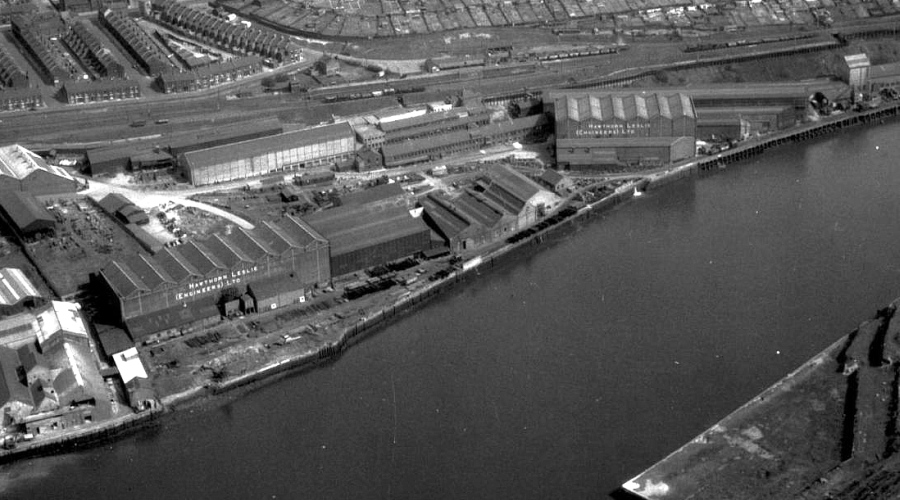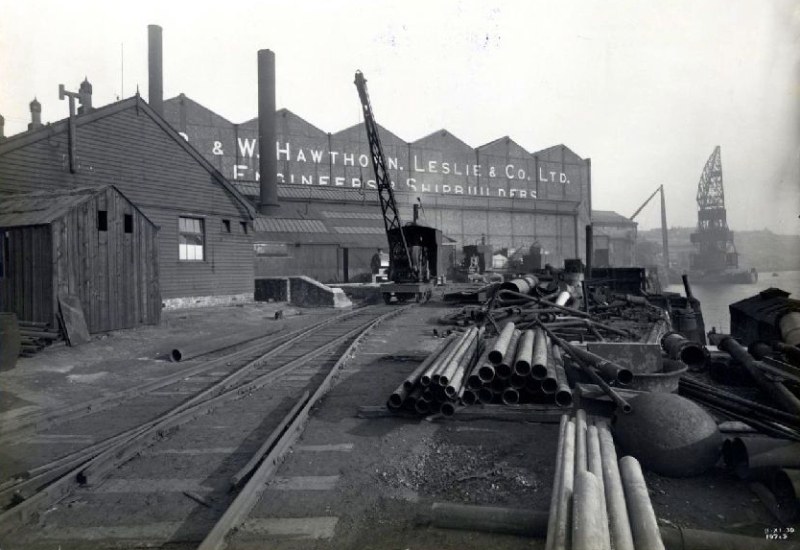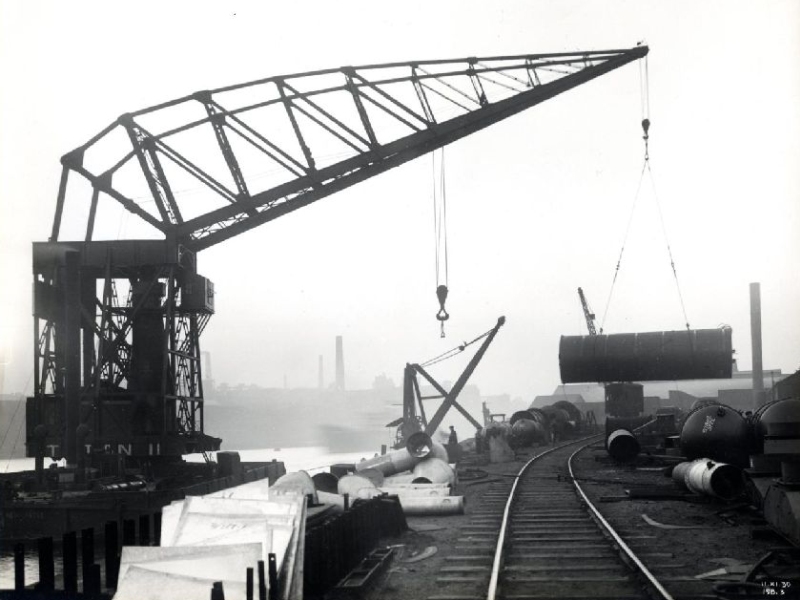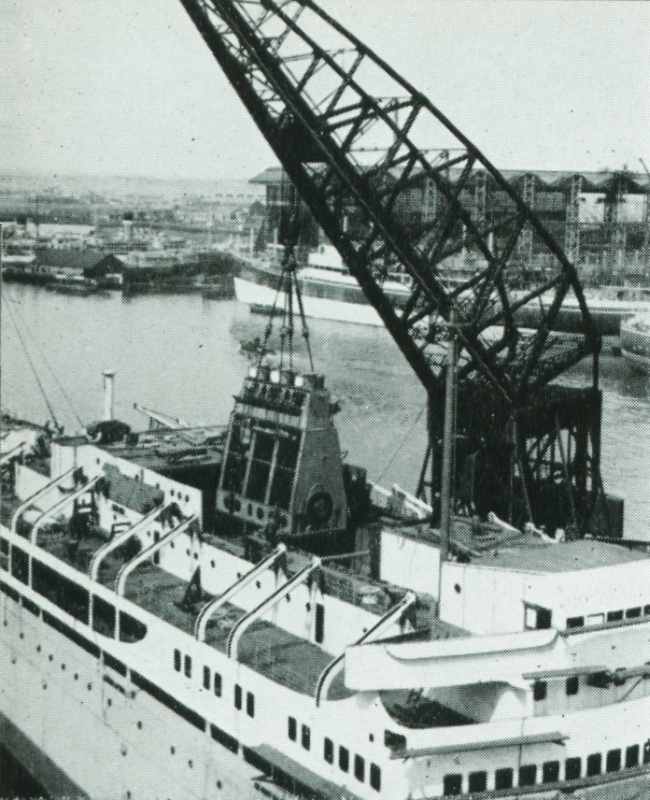|
R & W Hawthorn
Hawthorn-Leslie (Engineers) Ltd was based at St Peter's, Newcastle. |

Above photo of the St Peter's site is copyright of Tyne & Wear Museums
|
History
In 1817 Robert Hawthorn at the age of 21 began business as a general engineer and repairer of colliery machinery. With the assistance of his brother William and four workmen, his enterprise prospered and in 1820 under the trading name of R and W Hawthorn their first marine engine was built. In 1831 they produced their first steam locomotive for the Stockton and Darlington Railway and as the country's railway system rapidly expanded their locomotive construction soon became second only to that of their near neighbour, Robert Stephenson. By 1870 over 1,000 locomotives had been built. When R and W Hawthorn received their first order for Naval machinery for HMS Shearwater of 150 NHP the firm had already built about 100 sets of marine engines. Robert Hawthorn died in 1866 and in 1870 his brother William retired. The firm was then sold for £60,000 to a group of four men. These were Benjamin Chapman Browne, aged 31, Civil Engineer, Francis Carr Marshall, William Hawthorn Junior and Joseph Scott. As senior partner Benjamin Browne had wanted the business to manufacture only marine engines. However, orders were buoyant for locomotives and so in 1870, the shipyard of Messrs T and W Smith at St Peter's was acquired for the marine engine site. All marine engineering was then moved from the original works at Forth Banks to the new St Peter's site. The marine engine side of the business prospered under the direction of Francis Carr Marshall. In 1884 it was decided to separate the business activities of the Forth Banks and St Peter's sites and thereafter they were run virtually as two separate businesses. In 1937 Robert Stephenson of Darlington amalgamated with the locomotive works at Forth Banks to form Robert Stephenson and Hawthorn. This Company became a subsidiary of the Vulcan Foundry in 1943 and so Hawthorn's 137-year connection with Forth Banks ended. Andrew Leslie laid out his iron shipyard at Hebburn in 1853. He took into partnership his son-in-law Arthur Coote on his marriage with Andrew Leslie's adopted daughter. When Andrew Leslie retired in 1886, Arthur Coote sought the amalgamation of the Company with R and W Hawthorn's. R and W Hawthorn, Leslie and Co Ltd was incorporated as a limited company in 1886 to acquire the businesses of R and W Hawthorn of Newcastle and Andrew Leslie and Co of Hebburn. Initially ships were launched at Hebburn and then taken up to St Peter's to have the engines fitted there, but in later years the floating cranes TITAN I and TITAN II were used to bring engines down river to Hebburn. All engines would be assembled in the St Peter's works and then run to make sure all was well. They would then be dismantled, transported to Hebburn and fitted bit by bit into the ship's hull whilst fitting out took place. In 1954 two subsidiaries were set up - Hawthorn Leslie (Engineers) and Hawthorn Leslie (Shipbuilders) Ltd to operate the engine works and shipbuilding yard respectively. The shipyard became part of Swan Hunter and Tyne Shipbuilders Ltd when it came into existence in 1968. Hawthorn Leslie (Engineers) Ltd became a member company of British Shipbuilders in 1977, later merging with George Clark and NEM to form Clark Hawthorn Ltd in 1979. Above description is based on a Tyne & Wear Museums article |

Above: A view along the quay with TITAN II alongside the sheerlegs

Above: TITAN II at work

Above: TITAN II lifting an engine into a ship at Hebburn